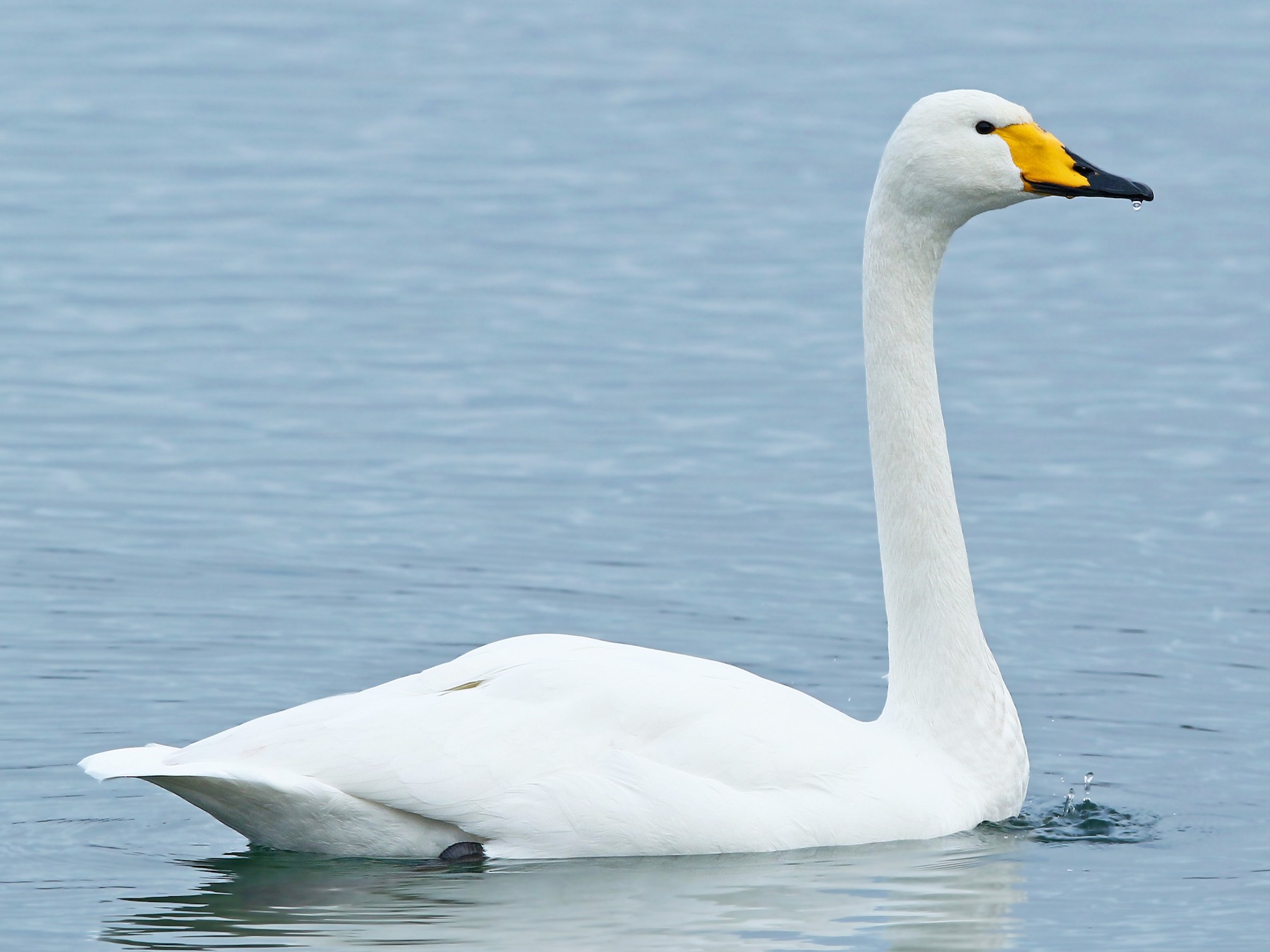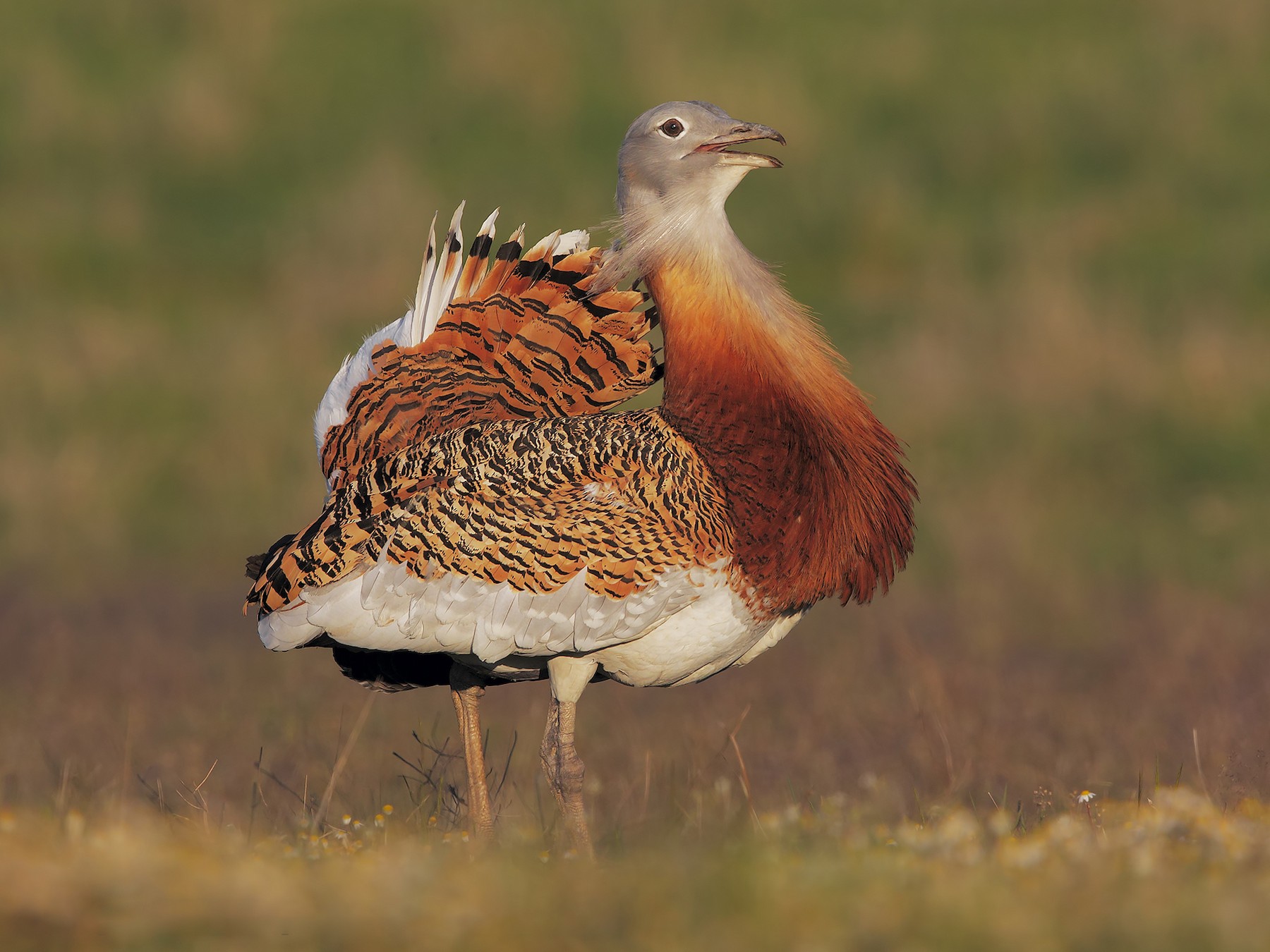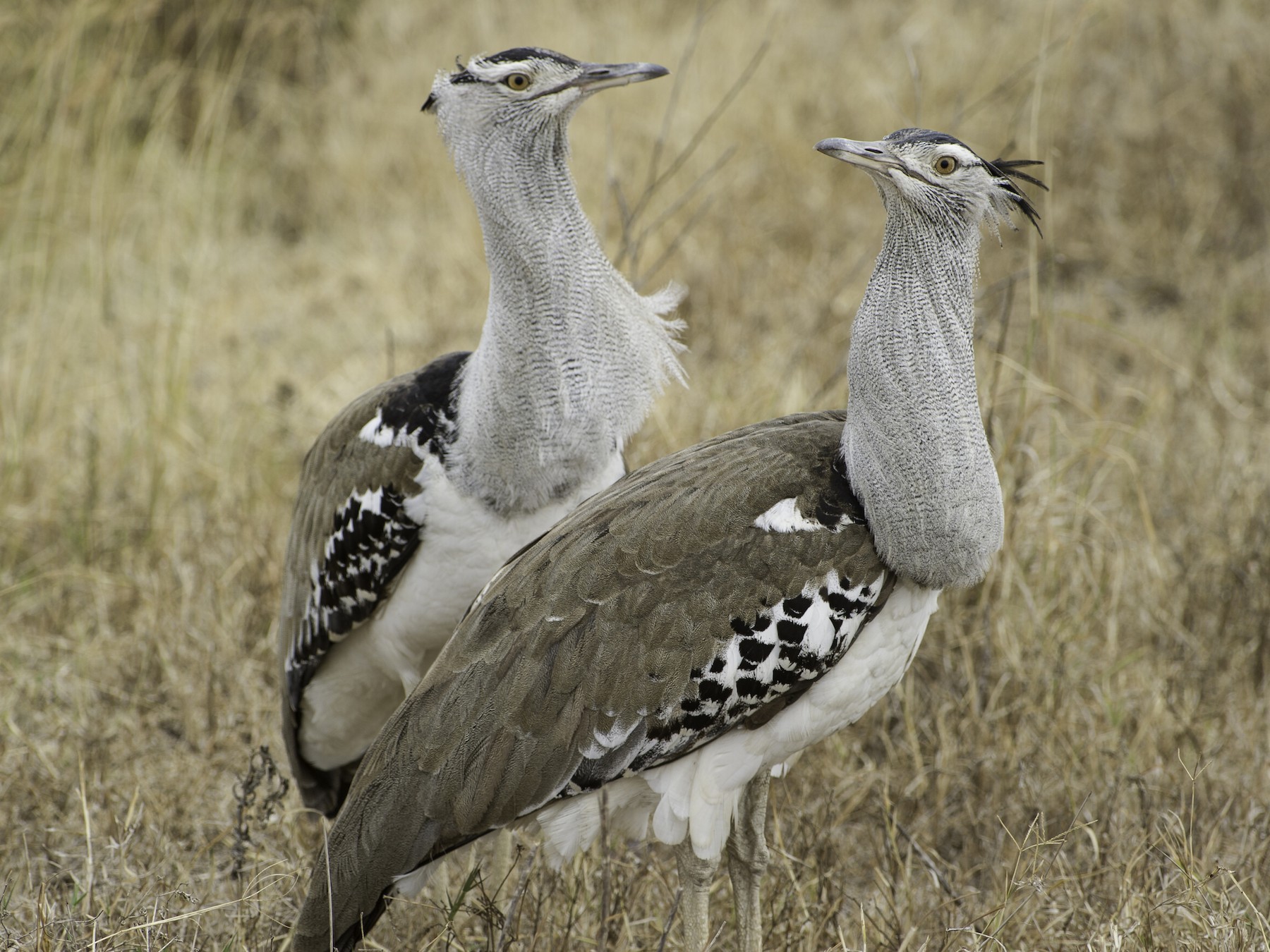Birds come in all shapes and sizes, from tiny hummingbirds to massive ostriches. But when it comes to the heaviest flying birds, you might be surprised by which ones make the list. These birds need to be able to move quickly and efficiently to find food and avoid danger, and their size and weight can make that a challenge.
In this article, we’ll explore the top nine heaviest flying birds today, including their size, appearance, and habitat. From terrestrial birds to waterfowl, these birds are some of the largest and most impressive creatures in the sky.
You are reading: Discover The Top 9 Heaviest Flying Birds Today

Top 9 Heaviest Flying Birds Today
Great Bustard

The great bustard (Otis tarda) is a bird in the bustard family, the only member of the genus Otis. It is one of the heaviest birds alive today that can fly. The adult male great bustard is amongst the heaviest living flying animals, typically measuring 90–105 cm (2 ft 11 in – 3 ft 5 in) tall, with a length of around 115 cm (3 ft 9 in) and has a 2.1–2.7 m (6 ft 11 in – 8 ft 10 in) wingspan.
The male can range in weight from 5.8 to 18 kg (13 to 40 lb), with the heaviest verified specimen, collected in Manchuria, weighing about 21 kg (46 lb), a world record for heaviest flying bird. The female’s weight can range from 3.1 to 8 kg (6.8 to 17.6 lb).
The Great bustard is found across Europe, in open grasslands and farmland from northern Morocco, South and Central Europe, to temperate Central and East Asia. European populations are mainly resident, but Asian populations migrate farther south in winter.
Kori Bustard

The Kori bustard (Ardeotis kori) is the largest flying bird native to Africa and the second heaviest flying bird in the world after the great bustard. Here are some interesting facts about the Kori bustard:
– The male Kori bustard may be the heaviest living animal capable of flight, with a weight range of 24-42 pounds (11-19 kilograms) .
– Females are roughly half the size of males and weigh between 4.8 and 6.1 kilograms.
– They have only three front toes, which are short, broad, and well-adapted for running.
– Their upper plumage is buff and gray, finely barred with black, which allows them to blend in with their environment. The underparts may be pale buff, white, or solid black.
– They inhabit wide, open grasslands and lightly wooded savannas throughout eastern and southern Africa.
– Kori bustards are omnivorous birds, although they tend to be more carnivorous than other species of bustards. Insects form a large portion of their diet, especially when they are chicks. They also eat a variety of small mammals, lizards, snakes, seeds, and berries. They have been observed eating carrion.
– The Smithsonian’s National Zoo’s research with Kori bustards has focused on their reproductive biology, including egg-laying, incubation, and chick-rearing.
– Kori bustards are known for their elaborate courtship displays, which involve inflating their necks and puffing out their chests while making a deep, booming call.
– They are listed as a species of least concern by the International Union for Conservation of Nature (IUCN) due to their wide range and large population.
Trumpeter Swan
The Trumpeter Swan (Cygnus buccinator) is the largest extant species of waterfowl and the heaviest living bird native to North America. Here are some interesting facts about the Trumpeter Swan:
Physical Characteristics:
– Trumpeter Swans are immense waterfowl with heavy bodies and long necks typically held straight both on the water and in flight.
– The adult birds usually measure 138–165 cm (4 ft 6 in – 5 ft 5 in) long, though large males can exceed 180 cm (5 ft 11 in) in total length.
– The weight of adult birds is typically 7–13.6 kg (15–30 lb).
– They have a wingspan of 185 to 250 cm (6 ft 2 in to 8 ft 2 in).
– The adult Trumpeter Swan’s plumage is entirely white. Like mute swan cygnets, the cygnets of the Trumpeter Swan have light grey plumage and pinkish legs, gaining their white plumage after about a year.
Habitat and Diet:
– Trumpeter Swans are found in North America and are the largest native waterfowl in the region.
– They feed mostly on aquatic plants, but also eat insects, small fish, and crustaceans.
Conservation Status:
– The Trumpeter Swan was almost driven to extinction early in the 20th century due to hunting and habitat loss.
– Thanks to conservation efforts, their populations have rebounded and they are now listed as a species of least concern by the International Union for Conservation of Nature (IUCN).
Mute Swan
The mute swan (Cygnus olor) is a species of swan and a member of the waterfowl family Anatidae. It is native to much of Eurosiberia and the far north of Africa, and is an introduced species in North America, Australasia, and southern Africa. Here are some interesting facts about the mute swan:
Physical Characteristics:
– Mute swans are entirely white with a bill that is orange with a black base. Young swans (cygnets) may be dusky brown-gray all over, with a gray-black bill.
– Adults usually measure 140-160 cm (4 ft 7 in-5 ft 3 in) in length, with a wingspan of 2.03-2.4 m (6 ft 8 in-7 ft 10 in) and a weight of 10-12 kg (22-26 lb) .
– They are known for their long, curved necks, which they often hold in an S-shape while swimming.
Habitat and Diet:
– Mute swans are found in a variety of aquatic habitats, including lakes, ponds, rivers, and estuaries.
– They are omnivorous, feeding on a variety of aquatic plants, insects, and small fish.
– Mute swans have enormous appetites and can eat up to 8 pounds of submerged aquatic vegetation per day, which can remove food and habitat for other species faster than the grasses can recover.
Behavior:
– Mute swans are known for their aggressive behavior and are highly protective of their mate and offspring. They can be very aggressive in defense of their nests and frequently attack canoeists, kayakers, and pedestrians who wander too close to a nest or chicks.
– They are usually silent, but adults sometimes snort and make hissing noises or puppy-like barking notes or whistles. The sound of their wings during flight, which has been described as a musical throbbing or humming, is very audible.
Conservation Status:
– North American populations of mute swans are still increasing, but they can pose a nuisance by consuming great amounts of aquatic vegetation and competing with native waterfowl. By the early 1990s, some biologists suggested control of the population in some areas, especially the Chesapeake Bay region and southern New England.
Dalmatian Pelican
The Dalmatian pelican (Pelecanus crispus) is the largest member of the pelican family and one of the largest flying birds in the world. Here are some interesting facts about the Dalmatian pelican:
Physical Characteristics:
– The Dalmatian pelican is the largest freshwater bird in the world, although it is rivaled in weight and length by the largest swans.
– They have a wingspan that can reach lengths of up to 11.5 feet (3.5 meters) and they average around 30 pounds (13.6 kilograms).
– They have a disheveled appearance, with dirty white feathers overall and a scruffy, upswept crest. They have black primaries, which are prominent only in flight.
– In the breeding season, they have an orange-red lower mandible and pouch against a yellow upper mandible. In winter, the whole bill is a somewhat dull yellow.
Habitat and Diet:
– Dalmatian pelicans are found in freshwater habitats, including lakes, rivers, and estuaries.
– They are piscivores, which means that they mainly eat fish. An adult can eat up to 4 pounds of fish in one day. To catch fish, they will commonly work in small groups of three to five, or team up with other aquatic birds such as cormorants. The pelicans will herd the fish toward shallow areas and then use their large bill pouches like fishing nets to scoop the fish from the water.
Conservation Status:
– The worldwide population of Dalmatian pelicans has dropped from millions of birds at the beginning of the 1800s to only about 1,000 total individuals today.
– Conservation efforts have been undertaken on behalf of the species, including reintroduction programs and habitat restoration.
Andean Condor
The Andean condor (Vultur gryphus) is a massive South American bird and the largest flying bird in the world by wingspan. Here are some interesting facts about the Andean condor:
Physical Characteristics:
– Andean condors are among the largest flying birds in the world, with a wingspan that can reach up to 10.5 feet (3.2 meters) and a weight of up to 33 pounds (15 kilograms).
– They have black feathers on their wings and tail, with a distinctive white ruff around their necks. Their heads are mostly bald and can range in color from yellow to orange to red.
– The males are larger than the females and have a fleshy comb on their head and neck, which they use in courtship displays.
Habitat and Diet:
– Andean condors are found in the Andes mountains and adjacent Pacific coasts of western South America, from Venezuela and Colombia in the north to Tierra del Fuego in the south.
– They are scavengers and feed on carrion, including the carcasses of large mammals such as guanacos, llamas, and vicuñas. They also eat smaller animals such as rodents and birds.
Conservation Status:
– The Andean condor is considered vulnerable by the International Union for Conservation of Nature (IUCN) due to habitat loss and secondary poisoning from lead in carcasses killed by hunters.
– Captive breeding programs have been instituted in several countries to help increase the population of Andean condors.
– The Andean condor is a national symbol of Bolivia, Chile, Colombia, Ecuador, and Peru and plays an important role in the folklore and mythology of the Andean regions.
Eurasian Black Vulture
The Eurasian black vulture, also known as the cinereous vulture or monk vulture (Aegypius monachus), is a large raptor in the family Accipitridae and is distributed throughout much of temperate Eurasia. Here are some interesting facts about the Eurasian black vulture:
Physical Characteristics:
– The Eurasian black vulture is the largest Old World vulture and the largest member of the Accipitridae family. It has a body length of 1.2 meters (3 feet 11 inches), a wingspan of 3.1 meters (10 feet), and a maximum weight of 14 kilograms (31 pounds).
– This species is dark brown with a slightly wedge-shaped tail. In flight, it appears all dark, with some contrast between the leading edge and trailing edge when viewed from below.
Habitat and Distribution:
– The Eurasian black vulture is found in various habitats, including mountains, forests, and steppes, with a preference for open areas and cliffs for nesting.
– Its range extends from Europe to Asia, with populations in Spain, Portugal, France, and Bulgaria experiencing a comeback thanks to the increase in the Spanish population.
Conservation Status:
– The Eurasian black vulture faced a dramatic decline in Europe due to illegal wildlife poisoning and a reduction in the availability of food. Habitat destruction and changes also had a significant impact on populations in Europe.
– The species is listed as “Least Concern” on the IUCN Red List, but its conservation status varies across its range, with some populations being more threatened than others.
Whooper Swan
Read more : Can Birds Eat Roasted Sunflower Seeds?
The whooper swan (Cygnus cygnus) is a large northern hemisphere swan and the Eurasian counterpart of the North American trumpeter swan. Here are some interesting facts about the whooper swan:
Physical Characteristics:
– The whooper swan is similar in appearance to Bewick’s swan, but is larger, measuring 140–165 centimeters (55–65 inches) in length and having a wingspan of 205–275 cm (81–108 in).
– The weight of the whooper swan typically ranges from 7.4–14.0 kilograms (16+1⁄4–30+3⁄4 pounds), with males weighing an average of 9.8–11.4 kg (21+1⁄2–25+1⁄4 lb) and females weighing 8.2–9.2 kg (18–20+1⁄4 lb).
– The whooper swan has a long, thin neck, which it usually holds erect, and black legs.
Habitat and Distribution:
– The whooper swan breeds in shrub-forest tundra and taiga zones across Eurasia, south of the Bewick’s swans’ breeding range, extending from Iceland and northern Scandinavia east to Siberia.
– They winter in marshy lakes and wetlands, often in wild areas, and birds from Siberia winter in small numbers in the Aleutian Islands, Alaska.
Conservation Status:
– The whooper swan is listed as a species of “Least Concern” on the IUCN Red List due to its large population and wide distribution.
– The whooper swan has been the national bird of Finland since 1981 and is featured on the Finnish 1 euro coin.
Wandering Albatross
The wandering albatross (Diomedea exulans) is a large seabird from the family Diomedeidae, which has a circumpolar range in the Southern Ocean. Here are some interesting facts about the wandering albatross:
Physical Characteristics:
– The wandering albatross is one of the two largest members of the genus Diomedea (the great albatrosses), being similar in size to the southern royal albatross.
– They have the greatest known wingspan of any living bird, stretching up to 3.5 meters (11.5 feet) across.
– The wandering albatross is the whitest of the wandering albatross species complex, with white feathers and grey-black wings. They have a pink bill and feet.
Habitat and Distribution:
– Wandering albatrosses are found in all oceans except in the North Atlantic.
– They breed on several subantarctic islands, which are characterized by peat soils, tussock grass, sedges, mosses, and shrubs.
Diet:
– Wandering albatrosses feed on cephalopods, small fish, and crustaceans.
Behavior:
– Wandering albatrosses are great gliders and can soar through the sky without flapping their wings for several hours at a time.
– They mate for life and breed on subantarctic islands, with pairs returning to the same nesting site year after year.
Conservation Status:
– The wandering albatross is listed as “Vulnerable” on the IUCN Red List due to habitat loss, bycatch in fishing gear, and ingestion of plastic debris.
– They are also protected under the Agreement on the Conservation of Albatrosses and Petrels (ACAP), which aims to reduce the impact of human activities on these birds.
FAQS
1. What is the heaviest flying bird in the world?
The heaviest flying bird in the world is the great bustard, which can weigh up to 46 pounds.
2. What is the bird with the largest wingspan?
The bird with the largest wingspan is the wandering albatross, with a wingspan that can reach up to 12.1 feet.
3. Where are these birds found?
These birds are found all over the world, from grasslands and farmlands in Central Europe and East Asia to freshwater habitats and oceans.
4. What do these birds eat?
These birds have different diets, ranging from insects and small mammals to fish and crustaceans.
5. Are these birds endangered?
Some of these birds are endangered, such as the Andean condor and the Dalmatian pelican, while others are listed as species of least concern, such as the whooper swan and the great bustard.
6. What is being done to protect these birds?
Conservation efforts include captive breeding programs, habitat restoration, and reducing human impact on their habitats.
Source: https://petstutorial.com
Category: Birds










